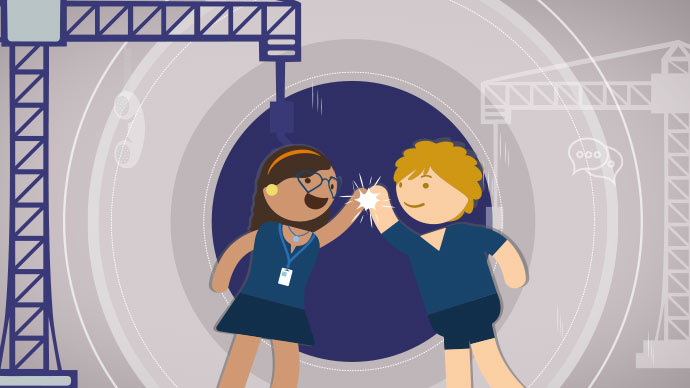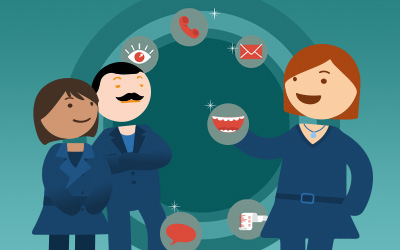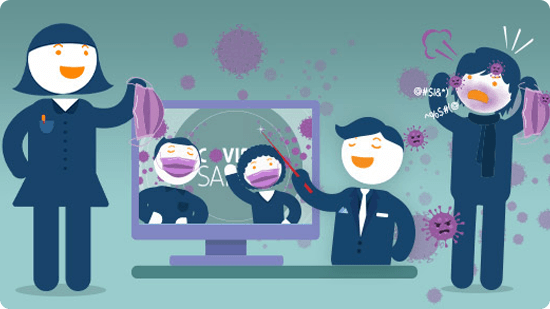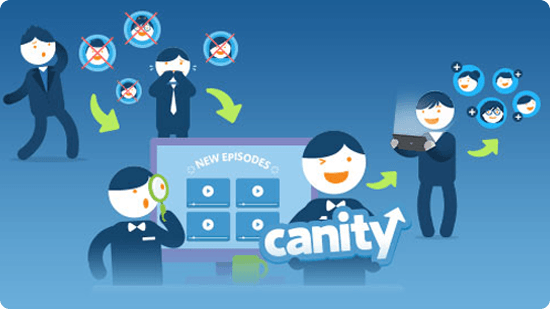Related Articles
Related Articles
Customer Service Training
Explore More
Dealing With Customers Online
Business Phone Etiquette
Time Management
Handling Customer Complaints
Workplace Health And Safety
Learner Engagement
Customer Service Training
Prevent Customer Churn
Customer Satisfaction
Sales Training
Training new team members can be a challenge, and with working from home, it can be even more challenging.
You need to get the new team member up to speed as quickly as possible without dumping them in at the deep end, and it can be hard to get the balance of trust versus hand-holding just right.
So how do you go about onboarding new team members as quickly and efficiently as possible? Here are a few handy hints to get you started!
1) Remember your own first day
It’s always a good idea to think back to your first day at your organisation and think about what was done well and what was done poorly. Ideally, your organisation will already have an onboarding procedure, but it’s always worth a quick review with your own experience in mind to check that it covers everything it needs to. And if you don’t have an onboarding procedure and checklist, now’s your chance to develop one!
Every time you onboard a new team member you should review this procedure and update it to make it more efficient and effective.

2) Create a welcome pack
A welcome pack is always a nice touch – be it in person or digital, it’s always nice to show you’re excited your new team member is here and to show that you want their first day to be special.
Perhaps you might include a couple of free vouchers for the local coffee shop, or maybe a cheat sheet of the people they will most need to talk to with pictures and a description of who they are and why they might need them. For example, “This is Mike from IT! He’s the guy to call when you can’t logon and can’t work out why. His mobile is 0078 993 789. Mike also organises the Friday Burger order so get to know him!”

3) Involve lots of co-workers
It's also helpful to have a plan mapped out and ready to go for the first few days or first week, and remember to give your new team member a copy of this plan up front. People always feel more comfortable when they know what to expect, so having a detailed plan of what they will be doing will help to put them at ease.
When you put your plan together, be sure to include a variety of people in their training. This not only gives your new team member the opportunity to meet other colleagues, but it will help them to absorb the information better, as it will segment the training in their mind and break the monotony of just one person always providing all of the information. Keep in mind however that some people are more patient and better trainers than others and you want your new team members training experience to be a positive one.

4) Focus on company culture
Don’t forget to give your new team member a detailed breakdown of what your organisation does and what makes it successful early in their first week. If you’re onsite, give them a detailed tour. It’s much easier to learn and retain information if that information has context. Whilst explaining what your company does, be sure to focus in on your company culture, and be specific about values that are important and what it is that is unique about your company culture.

Ideally you will have a detailed job description for your new hire, so you should also have detailed procedures of how to complete particular tasks. Make sure your new team member has a copy of this job description and show them where on your system they can access detailed procedures. This will enable them to be more independent and be able to work their way through a procedure rather than relying on memory alone. You can even create a folder with everyday procedures for them to refer to, or a spreadsheet with detailed procedure information. Everyone works a little differently, so having both print and online options may be handy
5) Train on fundamental skills
As well as company specific information, there are generally broad skills that all new employees must have. For example, they must know how to use the phone in an office environment, have appropriate email etiquette, have some fundamental customer service, and other useful skills.
Often employers simply assume all employees already have these skills. This is a bad assumption, as many people don’t, or some may have gaps in their skills.
To address this, you can incorporate short online training videos that cover these topics as part of your new employee induction or new team member onboarding process. Ideally stick to short rather than long form videos as this makes the information easier to understand and to retain. You might set your new team member a series of videos to watch across a day, a week, or even a month. A series of short videos covering different aspects of a topic is best as it reinforces learning and will lead to better knowledge retention.

6) Schedule regular check-ins
As part of your onboarding plan, you should schedule regular times to check in with your new hire and specifically check their understanding and their progress.
This isn’t simply, “how are you going” “good” “ok that’s great”.
You should take the time to revise in detail what they’ve covered, question them about their understanding and use the opportunity to clarify any misunderstandings they may have.

And don't forget the little things!
If you are in the office face to face, organise someone to take your new employee to lunch or at least to sit with them in the lunchroom. We can all remember being the new kid at school with no-one to sit with at lunch time – it can be a very daunting experience!
Most of all, remember that being a new employee can be very frustrating. Generally, new team members are keen to get up and running quickly and keen to show they can do a good job, so give them all the help and support you can and encourage them to ask as many questions as they like to enable them to get up to speed as efficiently and effectively as possible.

If you’d like to find out more about Canity’s employee training programs check out our training library. Canity’s online training platform gives you the ability to schedule training videos for team members and check on their progress, you can find out more about how it works here.
Most Popular Blogs














Published by Canity